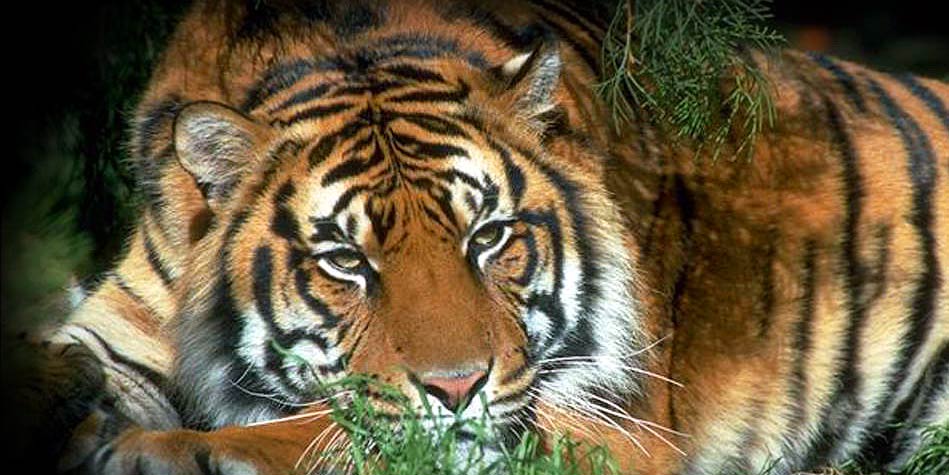Tigers are one of the most beloved big cats in the world, known for their ferocity, beauty, and endangered status. While there is only one species of tiger, Panthera tigris, there are nine subspecies of tigers.
In this article, we will take a closer look at the different types of tiger subspecies from around the world, including their physical characteristics, habitats, and conservation status.
You are reading: The 6 Types Of Tiger Species From Around The World

The 6 Types Of Tiger Species From Around The World
Bengal tiger
The Bengal tiger, also known as the Indian tiger, is a subspecies of tiger that is native to India, Bangladesh, Bhutan, and Nepal. It is the most common tiger subspecies and is considered to be one of the biggest wild cats alive today.
Bengal tigers are known for their reddish-orange coat with narrow black, gray, or brown stripes, and they have a white-coated variant known as the white tiger. They are carnivorous and feed on deer, cattle, and wild boar.
Bengal tigers are solitary animals and prefer to live in dense tropical forests and mangroves. They are threatened by poaching, habitat loss, and fragmentation, and their population is estimated to be fewer than 2,500 wild individuals.
The Bengal tiger is the national animal of both India and Bangladesh.
Indo-Chinese tiger

The Indochinese tiger, also known as the Corbett’s tiger, is a subspecies of tiger that is native to Southeast Asia. They are one of the six subspecies of tigers still living in the wild today. Historically, Indochinese tigers lived in Cambodia, China, Laos, Myanmar, Thailand, and Vietnam.
However, their population has declined to a mere 250 individuals, with breeding populations believed to remain only in Myanmar and Thailand. They are listed as endangered on the IUCN Red List of Threatened Species, though some researchers say they should be considered critically endangered instead.
Indochinese tigers are carnivorous and feed on deer, wild pigs, and other small mammals. They are known for their reddish-orange coat with narrow black, gray, or brown stripes, and they have a white-coated variant known as the white tiger.
The average lifespan of Indochinese tigers in the wild is 10 to 15 years. They prefer to live in tropical and subtropical forests. The destruction of habitats, poaching, and illegal wildlife trade driven by the increasing demand for traditional medicines, folk remedies, and wild meat are the main threats to their survival.
South China tiger

The South China tiger, also known as the Amoy tiger, is a subspecies of tiger that is native to southern China. It is the most critically endangered tiger subspecies and is considered functionally extinct in the wild.
The South China tiger is the most ancient of the tiger subspecies, believed to be a relic of the “stem tiger” from which all other tiger subspecies are descended.
The South China tiger is the smallest tiger subspecies with the exception of the Sumatran tiger. Males measure 230 to 265 cm (91 to 104 in) and weigh 110 to 175 kg (243 to 385 lb). The coat has shorter fur than the Bengal or Siberian and is more intense yellowish color; the stripes are broader, widely spaced, and diamond-shaped.
The South China tiger is a carnivore and feeds on deer, cattle, and wild boar. They prefer to live in dense tropical forests. The South China tiger is threatened by habitat loss, fragmentation, and hunting, and there are less than 20 individuals in the wild.
The South China tiger is considered to be a relict population of the “stem” ancestral tiger.
Amur (or Siberian) tiger

The Amur tiger, also known as the Siberian tiger, is a subspecies of tiger that is native to the Russian Far East, Northeast China, and possibly North Korea. It is the largest of all tiger subspecies and is considered to be the largest cat in the world. Adult male Siberian tigers can weigh up to 320 kg (700 lb.), while females are significantly smaller, weighing up to 180 kg (400 lb.).
Siberian tigers are distinguishable by their striped fur, and no two tigers have the same striped pattern. They are carnivorous and feed on elk, boar, bears, and deer.
Siberian tigers are solitary animals and prefer to live in eastern Russia’s birch forests, though some exist in China and North Korea.
The population of Siberian tigers had been stable for more than a decade because of intensive conservation, and there were 331–393 adult and subadult Siberian tigers in the region in 2005, with a breeding adult population of about 250 individuals.
However, they are still listed as endangered on the IUCN Red List of Threatened Species, and their population is estimated to be fewer than 500 individuals in the wild. The main threats to their survival are habitat loss, fragmentation, and poaching.
Sumatran tiger
The Sumatran tiger is a subspecies of tiger that is native to the Indonesian island of Sumatra. It is the smallest surviving tiger subspecies and is considered to be the most endangered of all tiger subspecies.
Read more : Top 5 Largest Most Dangerous Spiders In Oklahoma
The Sumatran tiger is the only surviving tiger population in the Sunda Islands, where the Bali and Javan tigers are extinct. They are distinguished by their heavy black stripes on their orange coats, and their fur is a darker orange than other subspecies, better allowing them to blend into their tropical rainforest habitat.
They are carnivorous and feed on almost any available animal, big or small, including fish, monkeys, wild boar, tapirs, and deer, among many others. Sumatran tigers are solitary animals and prefer to live in sub-mountain and mountain forests, lowland forests, and peat forests.
The Sumatran tiger is critically endangered, with fewer than 400 mature individuals in the wild. The main threats to their survival are poaching, deforestation, and habitat loss.
Malayan tiger
The Malayan tiger, also known as the Panthera tigris jacksoni, is a subspecies of tiger that is native to Peninsular Malaysia. It is the smallest tiger subspecies and is considered to be critically endangered, with only around 80 to 120 mature individuals left in the wild.
The Malayan tiger is distinguishable by its heavy black stripes on its orange coat, and it has a darker orange fur than other subspecies, allowing it to blend into its tropical rainforest habitat.
They are carnivorous and feed on wild boar, deer, bearded pigs, sun bears, and young elephant calves, among other animals. Malayan tigers are solitary animals and prefer to live in tropical and subtropical forests, shrublands, and grasslands.
The Malayan tiger is the national symbol of Malaysia. The main threats to their survival are habitat loss, fragmentation, and poaching.
FAQS
1. How many types of tiger species are there?
There is only one tiger species, Panthera tigris, but there are six subspecies of tigers still living in the wild today.
2. What are the six types of tiger species?
The six types of tiger species are the Bengal tiger, Indo-Chinese tiger, South China tiger, Amur (or Siberian) tiger, Sumatran tiger, and Malayan tiger.
3. What is the difference between the six types of tiger species?
Each subspecies of tiger is physically or genetically different from the rest. They differ in size, color, and habitat.
4. Where do tigers live?
Tigers can be found in far east Russia, parts of North Korea, China, India, Southwest Asia, and the Indonesian island of Sumatra.
5. Why are tigers endangered?
The human population has grown and encroached on tiger habitats, causing their territory to decrease. Pressure from habitat loss, illegal killing, and shrinking food supply have pushed all species of tigers onto the endangered list.
6. What is being done to protect tigers?
Conservation efforts include habitat protection, anti-poaching measures, and captive breeding programs. The Global Tiger Forum, an international organization dedicated to the conservation of tigers, has set a goal of doubling the number of wild tigers by 2022.
Source: https://petstutorial.com
Category: Animals










